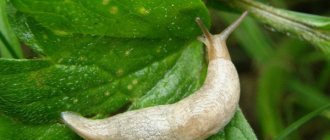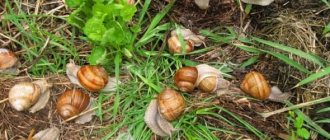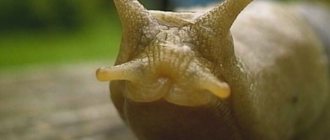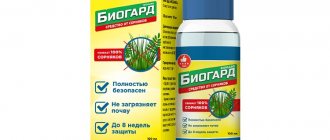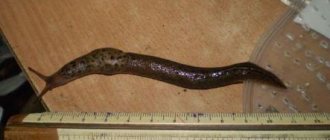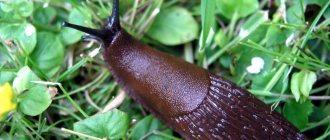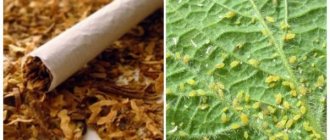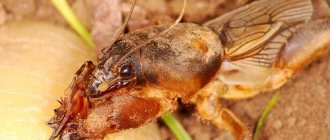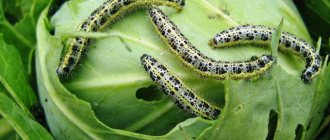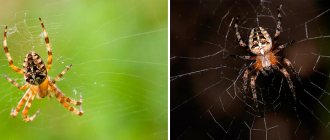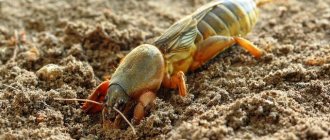In the summer, summer residents and gardeners across the country are tormented by the question “How to get rid of slugs and snails in their plantings?”
These pests appear literally out of nowhere, and after a couple of days all the cabbage, strawberries and other vegetable and berry crops are covered with parasites. Moreover, they hide under the leaves, at the roots, so it’s hard to notice them right away. Dear readers!
For you, we have created communities on social networks in which useful articles and interesting ideas are published several times a day! Subscribe and receive useful content in a convenient format! Today we decided to share with you the most effective ways to kill slugs in your garden. Here you will find only the most effective methods, as well as several life hacks from experienced summer residents.
What kind of slugs are there, photo
Slugs are gastropods, land mollusks.
There are several varieties of these pests:
- Slugs are oblong mollusks without a shell. Most often they have a grayish-yellow or earthy color. They are the ones who most often attack vegetable gardens and orchards.
- Half-slugs are recognized by their rudimentary shell.
- Snails are horned slugs with a shell. There are many varieties of snails: forest snail, variegated garden snail, common hairy snail, bush snail, and grape snail. They all differ in the color of the body and the shape and coloring of the shell.
Mollusks live for several years: snails - 3-4 years, slugs - 1-2 years. They become most active in the second half of summer. Parasites actively reproduce, laying eggs in dark and damp places. Most often, clutches, and even the slugs themselves, can be found under stones, old stumps, in compost, garbage and manure heaps, under old tree bark, etc.
Slugs and snails are mostly nocturnal and hide in secluded places during the day.
Protective barriers
A protective strip is established around the vegetable garden or garden. To make it, they take rough or sharp materials that are uncomfortable for mollusks to crawl on. There are many options: crushed shells, coarse sand, crushed nut shells, slaked lime or wood ash. Dried coffee grounds, mustard powder and superphosphate help.
It is best to scatter the product not in one strip, but in several. The distance between them should be 150-200 mm. Garden trees or bushes are protected in the same way if they grow at a great distance from each other. A protective barrier is built around them.
Copper barriers
Gardeners note that copper and any materials containing it often help. A simple but effective way to save the crop without resorting to the use of chemicals is to limit slugs’ access to the plants by creating a copper barrier.
When a slug's abdomen comes into contact with a copper-containing coating, a chemical reaction occurs that destroys the mucus. The copper tape generates a small electrical charge that can stop slugs and snails. Of course, it is difficult to create a protective screen around the entire garden. But you can fence the bases of trees, beds, bushes, and pots with plants with a copper ring. Copper wire or wire, self-adhesive copper tapes and meshes are suitable for this.
What harm do they do?
Slugs feed on plant leaves. Moreover, they give the greatest preference to cultivated plants. Using their mouthparts, they devour soft tissue and gnaw holes in leaves, leaving mucus.
IMPORTANT! Moving from plant to plant, mollusks not only eat plant tissue, but also spread infection.
Mollusks feed on seeds, flower corms, berries (they especially like strawberries), cabbage and other vegetables. They do not disdain flowers and fruits if they can get to them. This is not to mention the leaves and stems of plants mentioned above.
Home remedies for cellar, basement
Barrier traps are used for basements. The action is based on the fact that not all surfaces are accessible to pests: their lower body is very vulnerable. The mollusk will not crawl along cutting, piercing, or sharp surfaces. Craftsmen took note of this moment, creating barriers for slugs to enter the house and cellar.
To create barriers, expanded clay, brick chips, coarse sand, and lime are used.
Place “barriers” in strips up to 20 cm wide in places where slugs may enter the house or cellar.
Why do slugs and snails appear in the garden?
As mentioned above, slugs and snails are an important part of the ecosystem. In search of food and favorable conditions for growth and reproduction, slugs migrate between areas. If yours suits them, then they stay on it.
What does it mean? Slugs love moisture and warmth, and they also need shelter from the sun. If your site is waterlogged, there are many shady damp areas, boards are scattered, and stumps have not been removed, then with a high degree of probability you will encounter an invasion of slugs in the second half of summer.
Pests can also enter the garden along with infected vegetables, cuttings, seedlings, etc.
Reasons for the appearance of slugs in the garden
The sun is a natural enemy of slugs, as sunlight causes them to dry out. In the process of eating vegetable crops, the gardener usually discovers characteristic traces of these voracious mollusks - mucus.
Slugs are the same mollusks as snails, only during the revolution this subspecies lost its shell and therefore is forced to live in damp and dark places. They are incredibly prolific, so you need to get rid of them right away.
The appearance of this type of pest in a summer cottage is usually associated with several factors:
- Rainy weather and a long absence of dry and warm days.
- Plant debris remaining in the shade that the gardener did not remove in time is an excellent hiding place for slugs.
- Garbage in the garden that has not been thrown away for a long time.
In general, slugs can live in any place where there is shade and young plants for food. Moreover, they eat not only vegetables, but also decorative flowers.
In cellars and basements you can also often find such inhabitants; such conditions for existence are quite suitable for them, especially if there is any food suitable for them there - fruits and vegetables are suitable.
To prevent slugs from appearing in the garden, it is necessary to promptly remove all garbage from the area, not leave plant waste and take additional measures if the weather is humid. Additional measures are traditional methods of getting rid of slugs, or more radical methods if these pests have already actively settled in the garden.
How to get rid of slugs using traditional methods
Unlike most insect pests, which are often only controlled by chemical insecticides, slugs can be controlled using traditional methods. The point here is that gastropods move only on the ground. Therefore, there are many ways to protect plants from them using simple traps and unique “barricades”.
REFERENCE. Most traditional methods take advantage of the main weakness of slugs - their soft and very sensitive body, which easily gets burned from contact even with not the strongest reagent.
How to use slaked lime
When shellfish invade your area, protect your plantings with slaked lime traps. Dilute it in water and pour a small stream into the improvised channels around the perimeter of the beds. This should be done after sunset, when the slugs become active. The mollusk crawls onto this “path” of lime and gets a chemical burn.
Pepper infusion against slugs
Use dried chilies or just buy ground pepper from the store. Pour 50 grams of the substance into a liter of cold water, leave for 2 days, then boil and leave again for two days. The resulting working solution is sprayed onto the plants before flowering.
Mustard powder for slugs
An infusion is made from mustard powder, which is sprayed on plants and watered on the ground around them. Mix 200 ml of water with a spoon of mustard, leave for an hour and add to 10 liters of water.
How to make bait traps
The next method is making bait traps. Place grated carrots, a piece of beetroot or leaves on the ground in a shady place. Cover the top with a rotten board or similar covering.
Periodically collect and destroy shellfish that have accumulated on your trap.
Wormwood infusion
This recipe will help not to destroy slugs, but to scare them away from plants. The fact is that mollusks cannot stand the smell of wormwood.
The tincture is prepared as follows.
Pick the wormwood and chop it finely with a knife. Then add water at the rate of 1 part wormwood to 5 parts water. Leave the mixture to ferment, stirring every day. In a month the infusion will be ready. Spray plants with it to protect against slugs.
IMPORTANT! Since the product is infused for 4 weeks, take care to prepare it in advance.
Catching slugs by hand
If there are not very many pests, then it makes sense to collect them manually. And then either destroy it or take it off site. But remember that it is better to wear gloves when collecting shellfish, as they leave sticky mucus on your hands.
Mulch for pests
Mulch as a remedy for slugs has been known since the 60s of the last century. Mulch plantings and row spacing, and then mollusks will not be able to get to your plants. Remember, the less smooth the surface, the harder it will be for slugs.
Does beer help with slugs?
You can fight shellfish using beer traps. You will need several half-liter plastic cups or plastic bottles cut in half and beer. Containers are dug in around the perimeter of the beds or some individual vegetables. You can bury the cups flush with the ground or just above the soil level. Then beer is poured into the container. The smell and taste of the drink attracts slugs. They crawl into glasses and drown in them.
How to use baking soda
Baking soda can be used in two ways. The first is to sprinkle it on the pests in the discovered lair. This will cause instant death of the entire population. You can also prepare a solution for spraying: 5 liters of water, 50 grams of soda, 10 ml of liquid soap or shower gel.
Vinegar as a means of control
Vinegar is used in the same way. 65 ml of 9% vinegar is diluted in 10 liters of water and sprayed with a solution of slugs.
Are they afraid of ammonia?
Ammonia helps in the fight against harmful shellfish. 2 tablespoons of liquid are diluted in 5 liters of water and the plants are sprayed. The smell of ammonia is unbearable for gastropods, and they do not attack plants.
We build “barricades”
That is, we simply do not allow pests to move between the beds and plants. For example, we mulch the ground between the beds with straw, coarse sand, make grooves and fill them with ash, a mixture of ash and tobacco dust, lime, a mixture of ash, salt and ground pepper, egg or nut shells, preventing pests from reaching the vegetables. The abdomen of mollusks is delicate, so they simply cannot crawl anywhere. You can also place plastic gutters with water between the rows - the shellfish will either not be able to overcome the obstacle or will drown, which is what you actually wanted.
- Pros - a fairly simple and less labor-intensive method than manual assembly.
- Disadvantages - often slugs find refuge under the mulch, so it will have to be shaken up and changed periodically.
- Efficiency - 4.
These box beds will provide reliable protection for vegetables. It will be difficult for slugs to get over such an obstacle
What medications are there for slugs and snails, table
Special chemical preparations for slugs are called molluscicides. You can find out which of them are most effective in the fight against gastropods from the table below.
| Means | Method of preparation and use |
| Mesurol | Scatter the granules over the beds of plants most affected by slugs. Keep away from children and animals. Work strictly with gloves |
| Nemaslug | Spray the plants and water the soil around them. Treat 2-3 times at intervals of 1-2 weeks |
| Unichem | The gel is applied around plants (effective for large bushes) or along the perimeter of the beds. Creates a coating that slugs cannot overcome |
| BROS | Spread the granules over the entire area at the rate of 80 grams per 10 sq. m. Use in the afternoon. Take care of plants |
| Groza-3 | Sprinkle the powder on the area at the rate of 30 grams per 10 square meters in places where shellfish accumulate or appear most frequently. |
| Slug eater | Sprinkle the powder on the site at the rate of 30 grams per 10 square meters in places where shellfish accumulate or appear most frequently, as well as along the beds and between the rows. |
| StopUlit | Place baits in front of the plants. Apply as needed |
| NEUDORFF Ferramol | 500 grams per hundred square meters. Sprinkle later in the evening. Apply no more than 4 times per season |
| Predator | Place the bait on the substrate. 1 package per 70 sq. m., at least 4 traps per 10 sq. m. |
| Ulicide | 500 grams per hundred square meters. Sprinkle later in the evening. Apply once per season |
| Meta | Sprinkle the powder on the site in places where shellfish accumulate or appear most frequently, as well as along the beds and between the rows. |
Damage from slugs
The scientific literature indicates that these slugs can carry the bacteria Escherichia coli (Escherichia coli), and are an intermediate host of several types of parasites that infect canines; intermediate host of nematodes that cause parasitic diseases (Aelurostrongylus abstrusus), the definitive host of which is cats. Green feed contaminated by slugs can increase the risk of pets contracting botulism, which is caused by bacteria (Clostridium botulinum) that live in the soil and can come into contact with slugs.
The mucus of gastropods contains parasite eggs, so people should not come into contact with it with bare hands. It is recommended to protect your skin with gloves when collecting slugs. And then wash your hands thoroughly with soap and disinfect your skin and nails.
Plants that repel pests
In order not to have to worry about preparing preparations for slugs and not to set traps, you can plant plants around the area whose smell repels pests.
These include onions and garlic, mustard, marjoram, wormwood, thyme, savory and some others. Plan the planting of these plants so that slugs do not have access to vegetable and berry crops.
Thyme
Stopulit
An effective contact-intestinal type drug against snails and other mollusks. Due to the properties of the insecticide, the mucous membranes of the pest are damaged, which leads to its death.
| Options | Description |
| Advantages |
|
| Flaws |
|
| How to cook | Distribute the product evenly along the beds like a barrier or use bait areas. |
| What pests does it affect? | Snails, slugs. |
| Consumption per area | 3.5 g – 5 sq. m. |
| Price | 15 rub. – 3.5 g. |
Prevention measures
As we said above, with rare exceptions, slugs do not attack well-groomed areas. The most important measure to prevent the appearance of these pests is to keep your garden, garden or summer cottage clean and tidy.
- Remove weeds, even if they are located at the edge of your garden.
- Loosen the soil more often. Try to ensure that it has a uniform structure.
- Attract birds to your garden. But not too hard, otherwise you’ll have to drive away the birds later.
- Maintain order in the area. Do not create piles of rotten boards, remove stumps, stones, etc.
- Digging up the soil in the fall, as mollusks hide in it for the winter.
- Do not allow your area to become over-watered.
What are the dangers and what are their features?
In one night, several dozen slugs can easily destroy a dozen seedlings of cabbage, strawberries, and tomatoes.
Gastropods have sickle-shaped mouthparts containing a large number of small teeth. Their taste preferences are diverse, therefore, from mid-May, invasions of these pests in the garden and vegetable garden have been observed.
Mollusks live in cool, moist places. They cannot tolerate dry climates. Many gardeners and gardeners have taken this important factor as a basis in their control methods.
Along with the destruction of the soft ground parts of plants, snails and slugs are capable of carrying microscopic parasites, infecting garden crops. This provokes the development of serious diseases, which, in the absence of appropriate measures, leads to the death of the entire bush and lack of harvest.
The holes formed on the surface of the leaf are the entrance gates for bacterial and fungal infections. If there are too many slugs, they may well leave behind only crop stems, which indicates the need to control the gastropod population in the area.
Common mistakes
Fighting slugs is a tedious and thankless task. Let's consider where and what mistakes gardeners make in this struggle.
- Ignoring the problem. Snails and slugs are often not taken seriously. Although they can cause no less problems than aphids or May and Colorado potato beetles. Therefore, it is very important to start fighting slugs as soon as you see the first individuals in your area.
- Slug-killing techniques are being used, although the area is a mess. The most important thing that a summer resident must do is to create conditions in which slugs cannot live and reproduce. The destruction of individual individuals is only a small part of the process of combating mollusks.
- Treatment with strong-smelling products during flowering. This scares away bees that fly away from the area.
- Inaccurate use of molluscicides. Firstly, the granules must not fall on the leaves and stems of plants. Secondly, when using chemical poison, be sure that children and animals will not reach it.
What do slugs eat?
Slugs can be called “night robbers”, since they prefer to act unnoticed in the dark. They come out of their hiding places to “robbery” at 21:00 and hide after 2:00 am. Therefore, when gardeners notice holes in the leaves and pits in the fruits, they often think that caterpillars have “worked” on them. Because slugs scrape up their food using several thousand teeth located on their tongue-grater, the damage they leave behind is easy to recognize.
For example, in tomato and cucumber fruits, cabbage forks, and root vegetables, slugs make holes that expand deeper, and the leaves “make holes,” as a rule, in the middle, without affecting the large veins. The “tricks” of slugs are also easy to recognize by the silvery stripes of mucus and piles of stringy excrement left on the leaves and fruits.
What do Spanish slugs eat?
The main diet is plant foods - greens, leaves, fruits, vegetables, mushrooms. However, terrestrial mollusks of the genus Arion, which include Spanish slugs, worry zoologists not only with their gluttony, but also with attacks on the chicks of some passerine birds that make nests on the ground or in low bushes. Slugs are capable of causing damage to chicks, including death. There are plants that slugs eat first (some can be used as bait):
- cabbage;
- lettuce (until it sprouts and becomes bitter);
- strawberries;
- rape;
- dandelion;
- shepherd's purse;
- woodlice;
- cruciferous vegetables (except mustard).
The brown slugs that flooded the Moscow region in 2022 are extremely indiscriminate eaters, eating everything they come across: plant debris, dead animals, feces, rotting paper, and even earthworms and smaller snails.
Answers to frequently asked questions
Is it necessary to control slugs on the site?
Yes, because otherwise they will multiply and cause irreparable damage to the harvest
Which product is most effective in fighting slugs?
The most effective way is to create unbearable living conditions for them. Otherwise, use molluscicides and slaked lime traps.
There are a lot of slugs in cabbage, what should I do?
Treat the plants with molluscicides (don't forget to add soap for sticking), and place traps around them.
How to prevent shellfish from appearing on your property?
Remove household and construction waste. Avoid accumulation of leaves, old branches, carrion, rot and stumps. Keeping the area clean is the key to pest-free areas. Also plant plants around the perimeter of the site whose smell is unbearable for shellfish.
General tips and recommendations for summer residents
To reduce the number of pests in your garden plot, remember:
- Watering is best done through a container installed directly into the ground. Dry soil is unsuitable for gastropods.
- Mustard and salt sprinkled under a bush can get rid of slugs, but when they seep into the soil they provoke a violation of the optimal pH balance.
- Do not allow weeds to grow in the area. Grass retains moisture, and slugs thrive in it, even in the hottest and driest weather.
- Don't be lazy about setting traps. They will help to quickly collect parasites without polluting the garden with harmful substances.
- Preventative collection of slugs as a morning warm-up will help not only stretch the body, but also remove gastropods from the area.
Have you ever had to deal with snails or slugs in your garden?
All the time! Never
Don’t think that there is a product that you can scatter on the ground and it will do its job. Gardening is always work, and chemicals tend to accumulate and poison the plantings. Are such toxic harvests necessary, or maybe you have the energy and time to collect snails several times a week?
Setting up traps
Slugs love beer, so you can soak the leaves of burdock or other plants in dark beer and spread them between the beds, and in the morning collect a “harvest” of pests. You can simply cut a plastic beer bottle and bury it in the ground so that the slugs can climb in, but not get out. In addition, shellfish are attracted to dog food.
- Pros: it’s simple, effective, doesn’t require much effort, and all the costs include buying a bottle of beer or a package of food.
- Disadvantages - beer traps have no disadvantages, but by scattering dog food between the beds, you can attract local mongrels who will simply trample everything down.
- Efficiency - 5.
